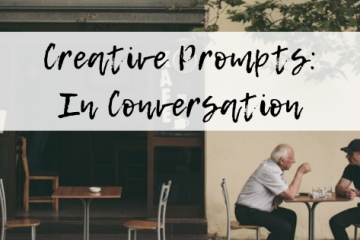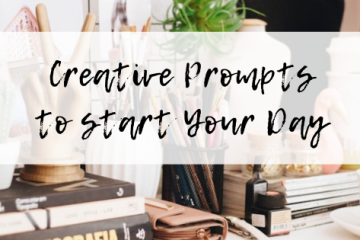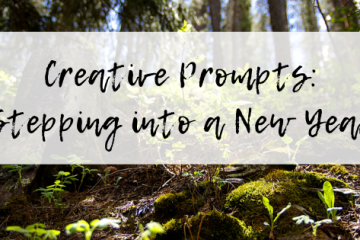

I was recently asked by a young writer for tips for character development, so this blog post is for her (you know who you are 🙂 ).
When you meet someone, how do you get to know them? How do you learn whether you have anything in common, whether they are going to be a friend, love interest, adversary or mere acquaintance?
Sometimes a person makes a huge impression on you straight away (for better or for worse!), and you feel as though you’ve known them all your life. Sometimes your first impressions are spot on; however, sometimes you misjudge someone based on something superficial, and it’s only much later that you learn something new that helps you understand them better.
Think, for example, of your best friend. How did you meet? What did they say or do that helped you know you wanted to hang out with them?
Alternatively, think of someone who you didn’t like when you first met, but then you got to know them and your opinion of them changed. Or perhaps they did or said something that confirmed your initial response to them!
Either way, you usually get to know someone little by little, through a variety of ways, including:
- S=speech (what they say)
- A=actions (what they do)
- A=appearance (what they look like, although sometimes appearances can be deceiving!)
- O=what others say about them or behave in relationship to them
I think in a lot of ways it’s the same with the characters we read in our favourite books or create in our own stories. The more time we spend with them, the better we understand them. In a great story, a character’s personality, strengths, weaknesses and values are revealed as they move about and respond to the world, people and situations around them rather than in a paragraph summary at the beginning of the story.
Character Questionnaires
I have often seen character questionnaires that ask you to answer a list of questions about your protagonist. For example:
- Age
- Clothing
- Where do they live?
- How do they speak and what kind of things do they say?
- Strengths
- Weaknesses
- Goals
- Biggest achievement
- Biggest Failure
- Who do they advice from?
- Who do they want to impress?
- What makes them angry?
- What makes them cry?
- What motivates them or gives them energy?
These are all great questions, but I find that when I am creating a new character, I don’t actually know all the answers straight up. While I can answer some of the profile questions, others I need to discover as I write. In other words, I put my character in a situation and see what happens; it’s only then I can go back and add to any character questionnaire or profile.
Here’s a few situational prompts to help get you started:
1. What you already know
If you already have a character in mind, what do you already know about them (if anything)? Answer any of the questions in my earlier “questionnaire” that you feel you already know the answer to, but don’t worry if you can only answer a few (or none at all).
2. Creating a new character
If you’re really stuck or are starting from scratch, one way of creating a new character is to “borrow” from those you already know.
Choose three people you know. Brainstorm:
a) one physical appearance from each person
b) one strength from each person
c) one weakness from each person
d) one habit and/or mannerism from each
e) one interest or talent from each
Using some or all of the above, combine into one fictional character as your starting point.
(For a completely different writing activity that uses an image to create a character from scratch, see writing prompt #2 in my earlier blog post, Creative Writing Prompts: Character Part 1).
3. Strengths, weaknesses and quirks.
None of us is perfect. Nor are most people completely evil. And neither should your characters be. Someone once said that even a villain is the hero of their own story. So ensure your characters, whether they are the protagonist, the antagonist or playing a supporting role, have both strengths and weaknesses, good and bad habits.
Select one of your characters and consider one strength, one weakness or flaw, and a habit they have.
Write a scene or scenes in which you reveal these.
Remember, though, that these might actually become clear only when you put your character in a situation and start writing, such as the next two prompts.
4. What Would Your Character Do? New Kid on the Block
There is someone new starting at the school or workplace of your focus character.
How does your character react to the other person’s arrival? Are they friendly? Welcoming? Resentful? Rude? Ambivalent? And how does the “new kid on the block” react to your existing character?
Imagine the two in conversation on the day they meet. Jot down the dialogue, body language, facial expression and actions within that conversation.
5. What Would Your Character Do? Under Stress
What do you imagine causes your character to feel stressed or anxious? How do they behave? Say? Where do they feel the stress or anxiety in their body?
What might your character do to rest, relax or deal with their stress and/or anxiety?
Create a scene in which your character is put under pressure and see how they respond.
6. Take Your Character Out for Tea
The idea for this activity comes from my writing buddy Shannon Meyerkort, who has written about taking one of her characters out for tea and asking a few questions. Surprisingly, the character had a few questions of her own, including poking fun at Shannon for some of her existing plot points!
So take your character out for tea – or a hot chocolate, soft drink, beer or even a meal. If possible, physically go somewhere and imagine your character across the table from you!
Ask your characters questions. Get your character to ask you a few questions too. And note down how they treat the wait staff and other customers as well!
Don’t think too hard. Write quickly and ignore spelling and punctuation.
Over to You
What speaks to you about developing your characters? Which activity might your attempt first?
If you would like more character development activities, check out two of my other blog posts:
And let me know what you discover about your character!



